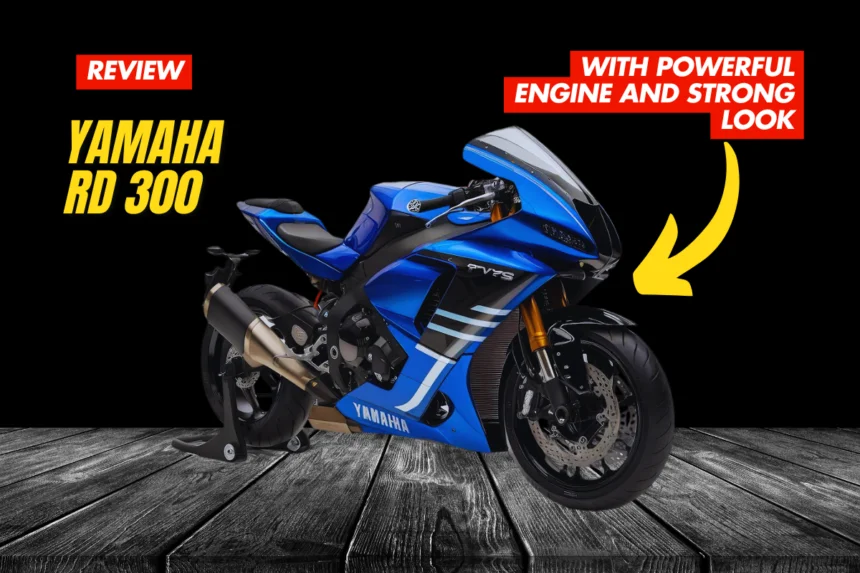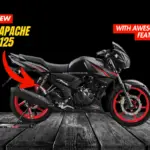Yamaha RD350 is a stunner and it has the ability to disrupt the two-stroke motorcycle. This bike combines power, lightness, and affordability making it without a doubt, the RD350 will live on. This article is aimed at taking the readers through the historical journey as well as the technical features and the legacy of the most well-known product.
Key Takeaways:
- Engine: The bike has a 347cc parallel-twin two-stroke motor capable of delivering 39 horsepower.
- Acceleration: 0-60 mph in only 6 seconds which was faster for its size back then.
- Autolube System: Yamaha’s injection oil system are the ones that made it possible to eliminate the need for a purse that mixes oil with the fuel.
- Weight: Only had a weight of 341 pounds which in turn lead to a very good power to weight ratio.
- Legacy: Inspired generators for the street and road racing bikes of the future and still is a preferred bike of the collectors.
Origins and Development
Yamaha set out to build a lightweight but at the same time a powerful motorbike that could attract the customers in the market in the early 1970s. This was the RD350 that came into the picture with the racing experience of the company that they infused with the innovation that everyday motorcycling lacked at that time.
Engine Design
Yamaha’s RD350 that was a 347cc parallel-twin two-stroke engine is the first break in the high-performance bikes. It boasted 39 horsepower, which gave it outstanding speed rating for its class and smooth acceleration potential.
Autolube System
No other bike has come with the breakthrough new system like the Autolube oil injection that was introduced to the market by Yamaha. This invention did not require riders to mix the gas and the oil by hand thus making the bike easier for everyday use.
Launch in 1973
The RD350 was available in the market for a price of less than $1,000 and it was one of the most liked high-performance motorcycles at that time which helped to open this sector to the masses. The bike was sought after by a lot of people.
💡 Key Takeaway: Hitherto the association of this powerful and lightweight model of Yamaha with racing technology, modestly expressible costs, and comfortability because it was prevailing over many bikers worldwide during that period.
Engineering Marvel
Revolutionary Two-Stroke Engine
The main feature of the RD350 is its 347cc parallel-twin two-stroke engine. This engine was more than 30 years ahead of its time, developing with it 39 horses. And indeed, the rider sometimes found the whole experience breathtaking.
Performance
This engine was endowed with instant power release, especially at the top RPM that was a big advantage for the RD350 to keep pace with heavy motorcycles.
Autolube
Yamaha’s Autolube oil injection system which is a groundbreaking method of lubrication separated the RD350 from its competitors. This is a feature that made the bike simple to use and maintain.
Transmission
The RD350, on the other hand, was designed with a six-speed gearbox that would serve as the cause of smooth and predictable shifting.
Braking
It was designed with a front disc brake, and that’s why the other things in its class were avant-garde at that time that was groundbreaking.
Handling
The RD350 had a featherweight frame and bolt-fast suspensions, which is why it was highly praised for its speed and control.
Acceleration
It could rush up from 0-60 mph in just six seconds only, namely less than the other models, even the big ones.
Top Speed
The RD350 was a fabulous machine on both the street and the race tracks since it could hit the 100 mph mark and go beyond it.
Handling
It is due to its lightweight build and accurate handling that the RD350 was the king of the road in corners and in those extremely tight situations.
Racing Heritage
The influence of RD350 went far beyond the usual blacktop and into the world of racing where it got a reputation that was feared by many of its rivals.
Daytona 200
At the Daytona 200, RD350 raced and won against often much larger bikes.
Club Racing
For many young riders, it was their best choice as it was a reliable bike, fast enough, and easy to modify. It was the bulk of the club racing field.
Modifications
Due to the bike’s design, it was easy to alter it. Aftermarket support was huge—people had the opportunity to buy and install new parts into their RD350s to improve the performance.
💡 Key Takeaway: The RD350 was not only dominant as a street bike but also enjoyed great success in the track scene where it got its biggest followers in the amateur racing field.
Market Impact
The RD350 had a unique and magical impact on the motorcycle market by offering the best performance at the lowest price.
Affordability
- Costing only about $100, the RD350 demonstrated better performance for a fraction of the price of larger bikes, which often cost $400–$500.
Competitors
- The success of the RD350 pushed other companies to produce their own two-stroke bikes, thus becoming competitors to Yamaha in the market.
Aftermarket
- The RD350 sparked a trend in the aftermarket industry, with many parts and accessories created to enhance the performance and styling of the bike.
💡 Key Takeaway: The RD350’s success prompted competitors to innovate and ultimately transformed the two-stroke market into one where high-quality bikes could be found.
Maintenance and Ownership
Maintenance
- The RD350 is relatively simple to maintain, with regular checkups required, particularly focusing on the autolube and carburetor.
Fuel Economy
- While the RD350’s fuel economy (30-35 mpg) wasn’t particularly impressive, its high performance and thrilling speed more than made up for it.
Parts
- The RD350’s parts and accessories remain readily available, thanks to its popularity, making it easy to maintain and restore.
💡 Key Takeaway: The RD350’s straightforward maintenance makes it a great choice for owners who appreciate vintage motorcycles from an iconic era.
Legacy and Collector Status
The RD350 has left a lasting impact, both in the hearts of collectors and enthusiasts.
Value
- Original and restored RD350 models can range from $5,000 to $15,000, depending on condition and originality.
Cultural Impact
- The RD350 has become an important symbol of motorcycle culture, revered for its performance, design, and influence on future generations of motorcycles.
💡 Key Takeaway: The RD350 continues to inspire motorcycle enthusiasts, and its legacy makes it much more than just a collectible—it remains a piece of living history.
FAQ
Q: How much horsepower does the Yamaha RD350 have?
A: The RD350 makes 39 horsepower, which made it one of the most powerful two-stroke bikes of its time.
Q: What is the top speed of the RD350?
A: The RD350 can achieve speeds over 100 mph, a remarkable feat for a bike in its class.
Q: How reliable is the Yamaha RD350?
A: The RD350 is known for its reliability, provided it is properly maintained. The engine and parts are highly durable, and the Autolube system simplifies upkeep.
Q: Can I still find parts for the RD350?
A: Yes, parts for the RD350 are still available, thanks to the enduring interest from fans and collectors.
Q: Is the RD350 suitable for racing?
A: Absolutely! The RD350 has a strong racing heritage, having competed in events like the Daytona 200, and remains a favorite among amateur racers.
Conclusion
The Yamaha RD350, a stunning classic from the early ’80s, not only dominated its era but continues to captivate motorcyclists and collectors today. Its combination of low cost, high speed, and simplicity helped shape the two-stroke motorcycle landscape. Whether you’re a vintage bike enthusiast, a collector, or a sports bike lover, the RD350 is a true legend that will always stay relevant in the hearts of its fans.








